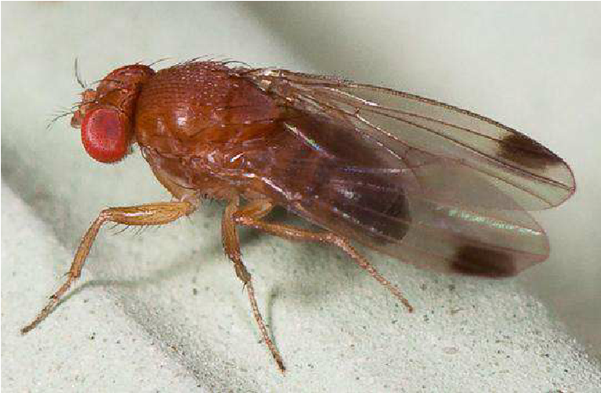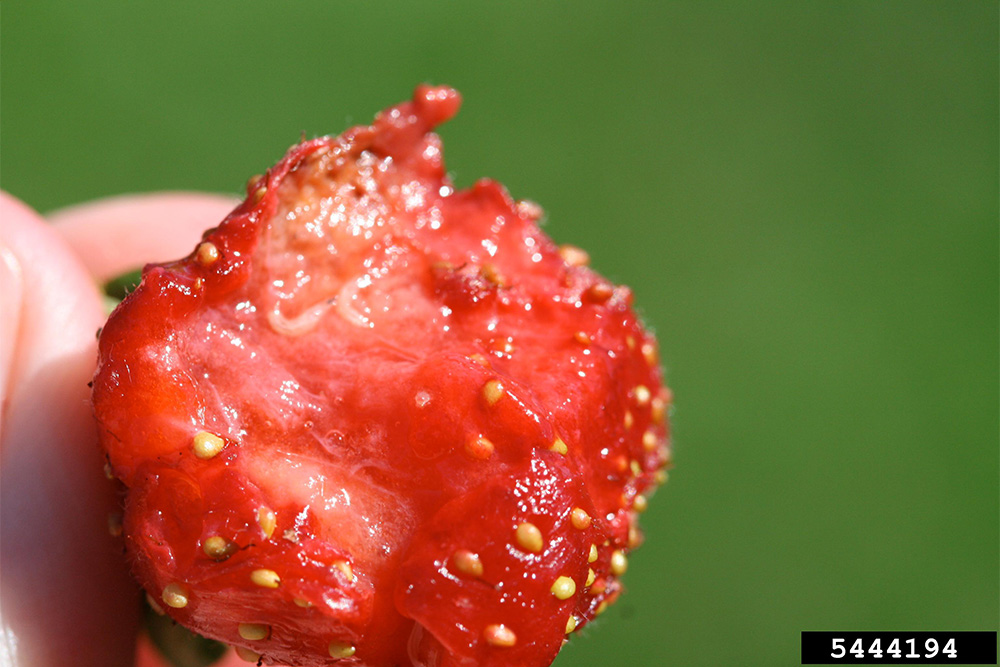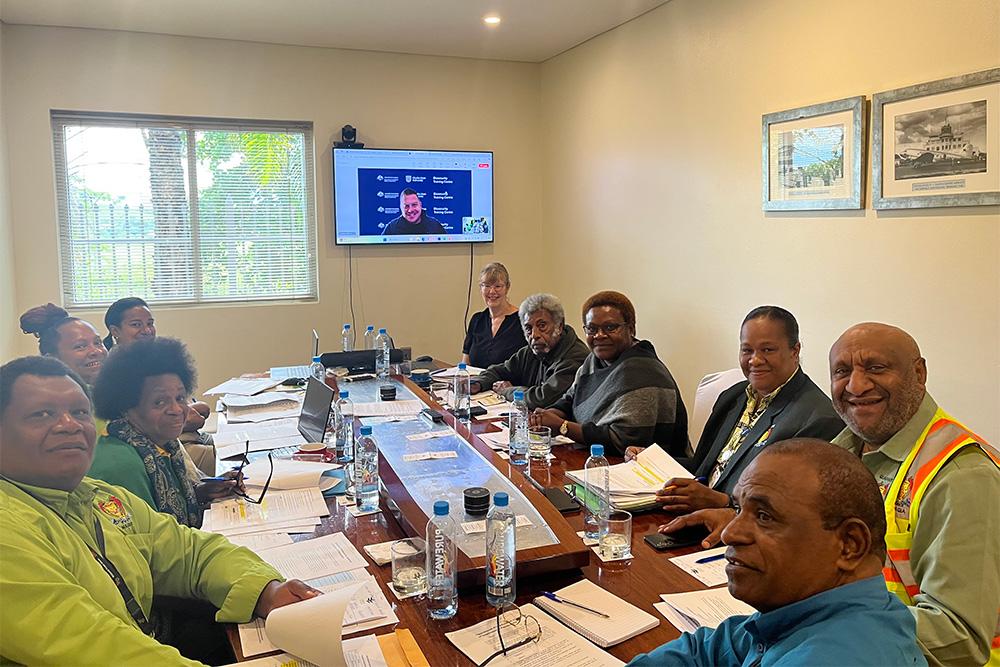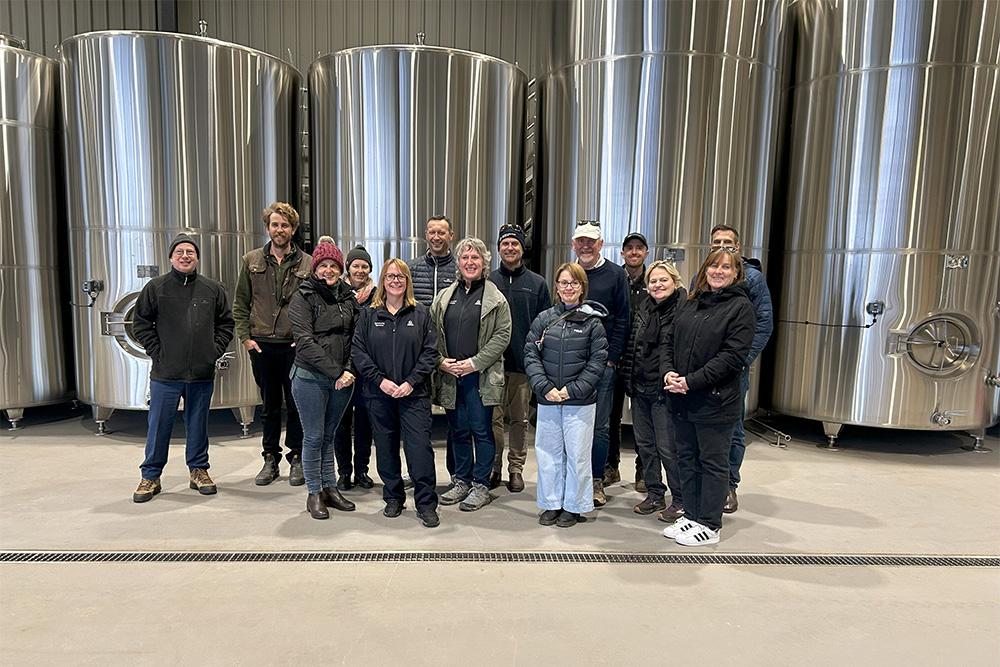The spotted wing drosophila Drosophila suzukii is a major exotic horticultural pest of thin-skinned fruit, including berries (blueberry, raspberry, blackberry, boysenberry, strawberry), stone fruit (cherry, nectarine, peach, apricot, plum, prune) and grapes. It also attacks apples, pears and other fruit with thicker skins once these fruits begin to rot.
The female spotted wing drosophila lays eggs in fruit, causing damage to the fruit as well as subsequent rotting. While most fly species can only lay eggs in ripe or damaged unripe fruit, this species can attack unripe and undamaged fruit. As a result, the spotted wing drosophila can severely reduce crop yield, with instances in North America where some berry growers have reported up to 100 per cent crop losses.
Adult spotted wing drosophila can only fly short distances, however the pest can still spread rapidly, as the larvae hide in developing or ripe fruit while the produce is transported long distances from farms to markets.
If this exotic fly established in Australia, it would cause serious losses for growers of soft berries, stone fruits and grapes.
This pest is ranked third on the National Priority Plant Pests (NPPPs) and is not present in Australia. The NPPPs highlight the sorts of plant pest threats Australia faces and national action plans are developed for NPPPs, setting out how we will prepare for these threats.
What to do
If you think you’ve found spotted wing drosophila flies or larvae:
- do not disturb the insect (this may be as simple as closing the doors on a shipping container, or sealing the infested fruit in a plastic container)
- collect a sample, if it is possible to do so without disturbing the flies or larvae, and
- report it: https://www.agriculture.gov.au/biosecurity-trade/pests-diseases-weeds/report
More information:
- Exotic pest profile: spotted wing drosophila – Farm Biosecurity
- Plant Health Australia: spotted wing drosophila in cherry
- Plant Health Australia: spotted wing drosophila in blueberries
- Plant Health Australia: spotted wing drosophila in rubus
- Plant Health Australia: spotted wing drosophila in grapes
- Draft import risk analysis – spotted wing drosophila





